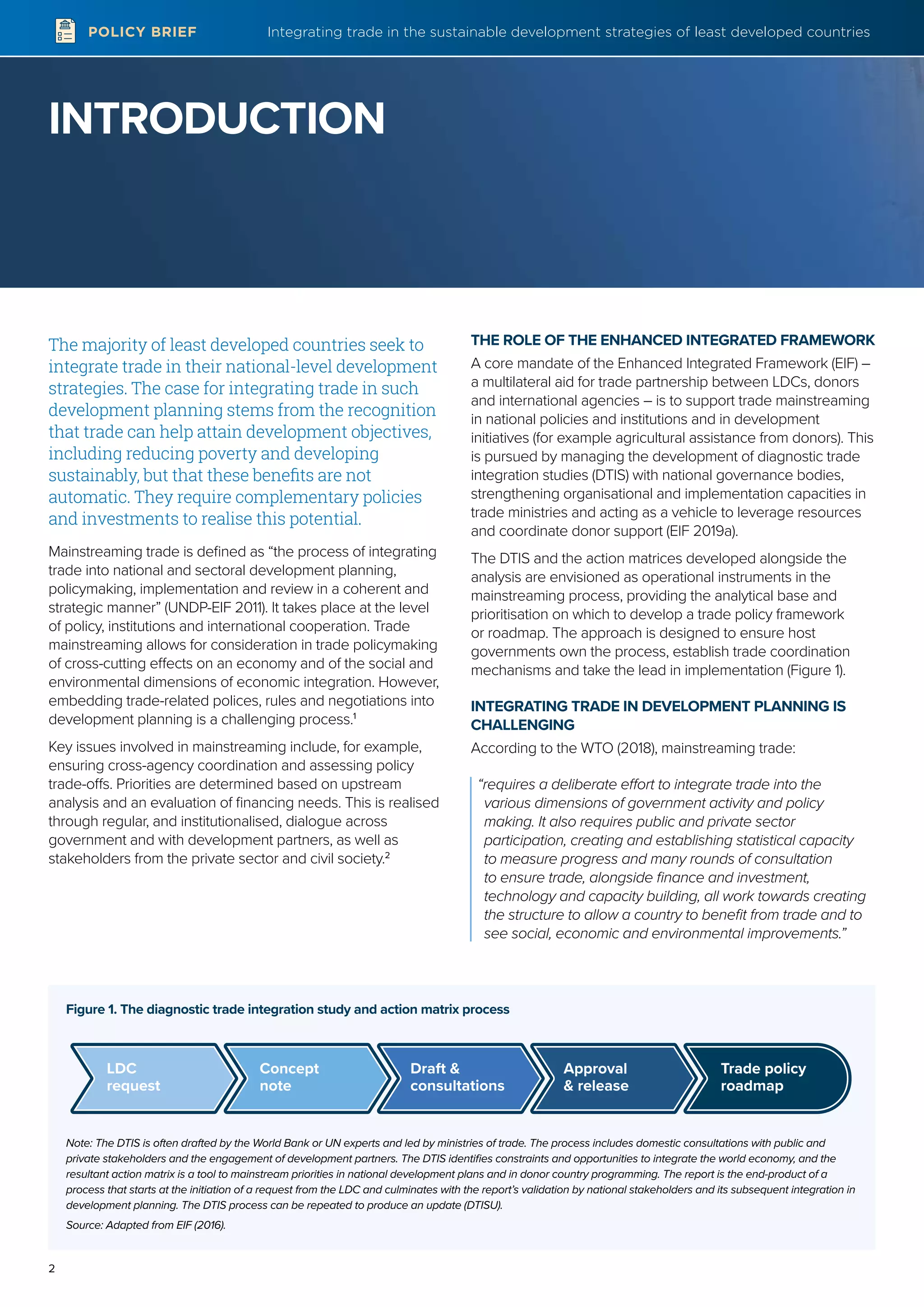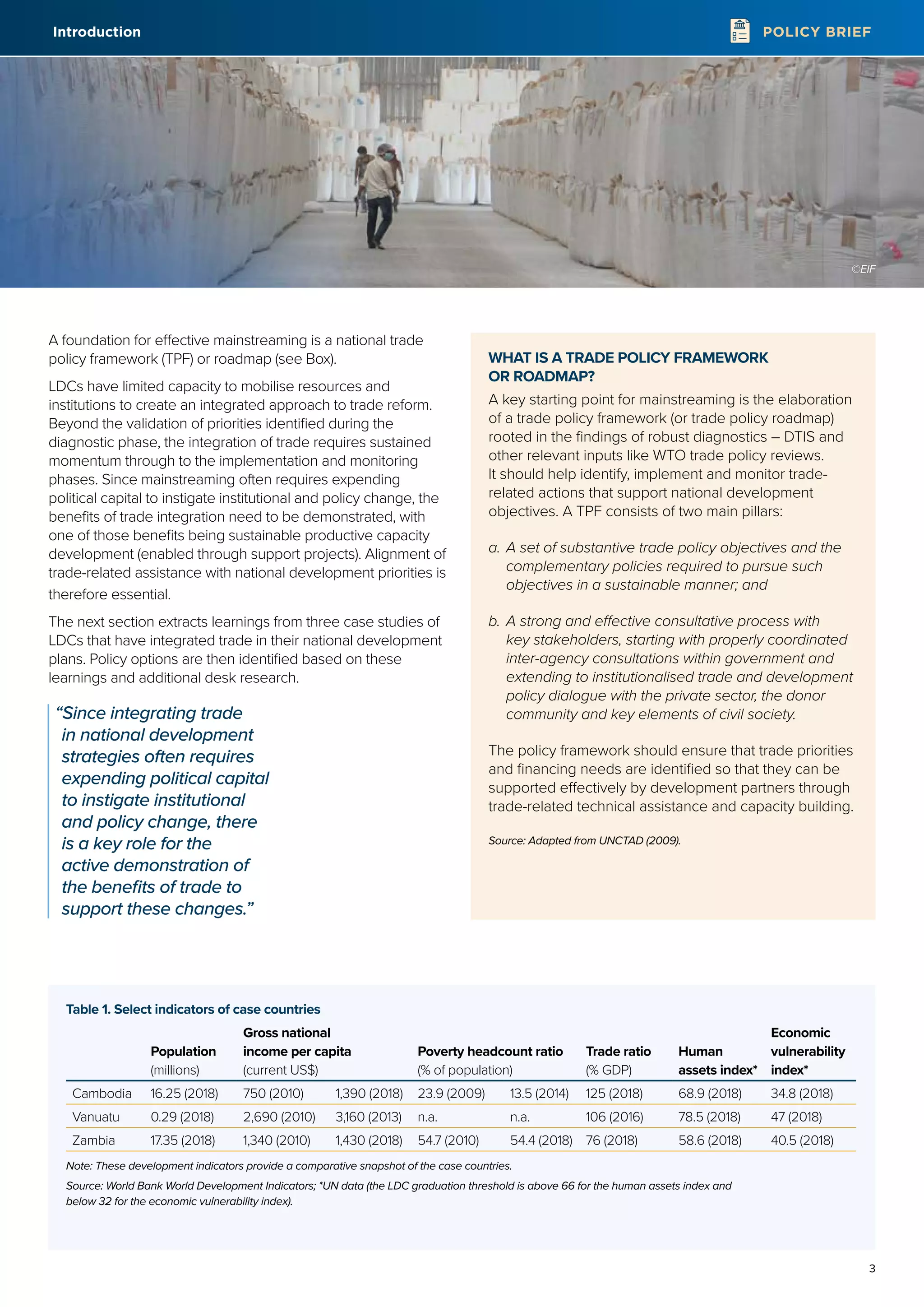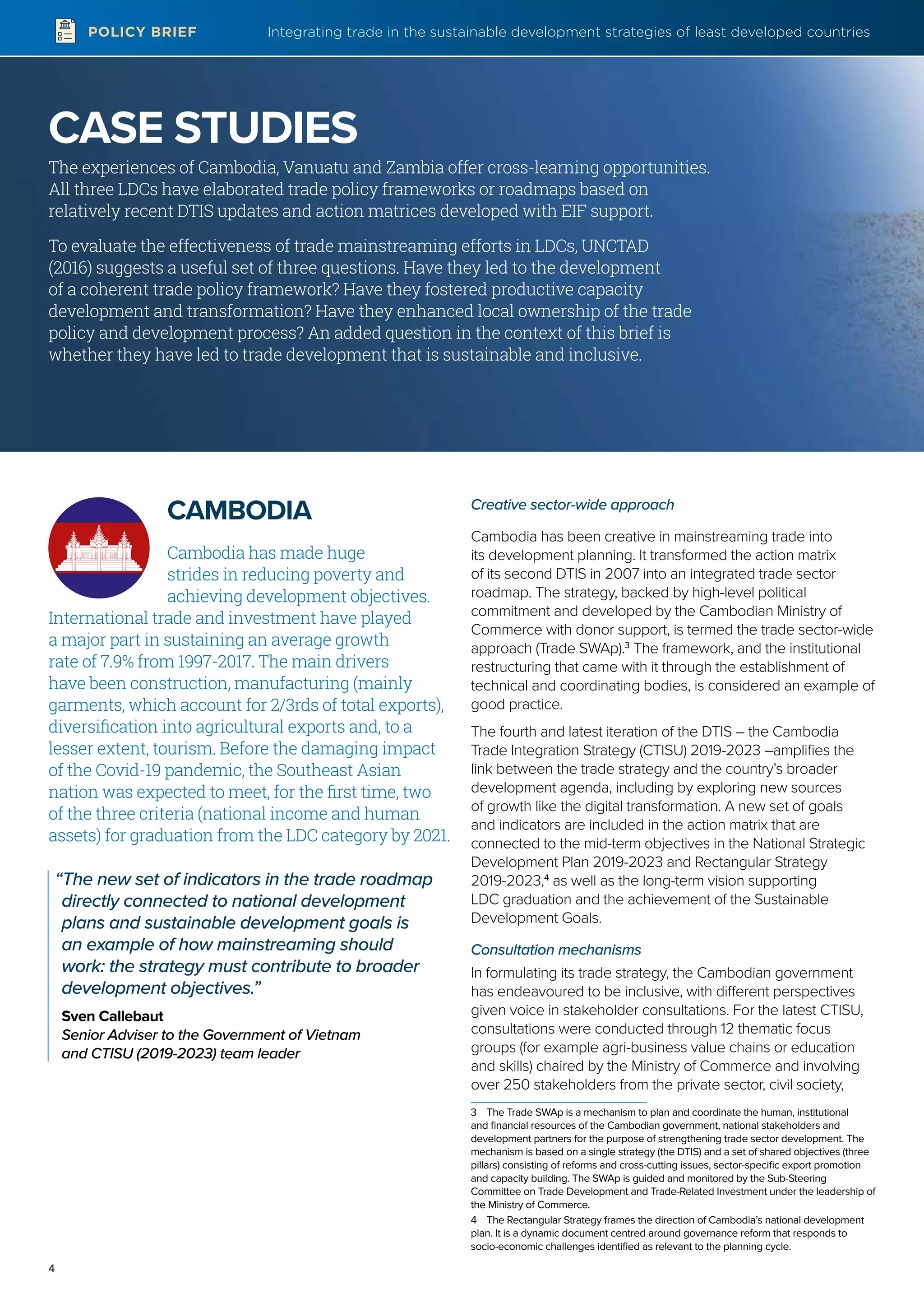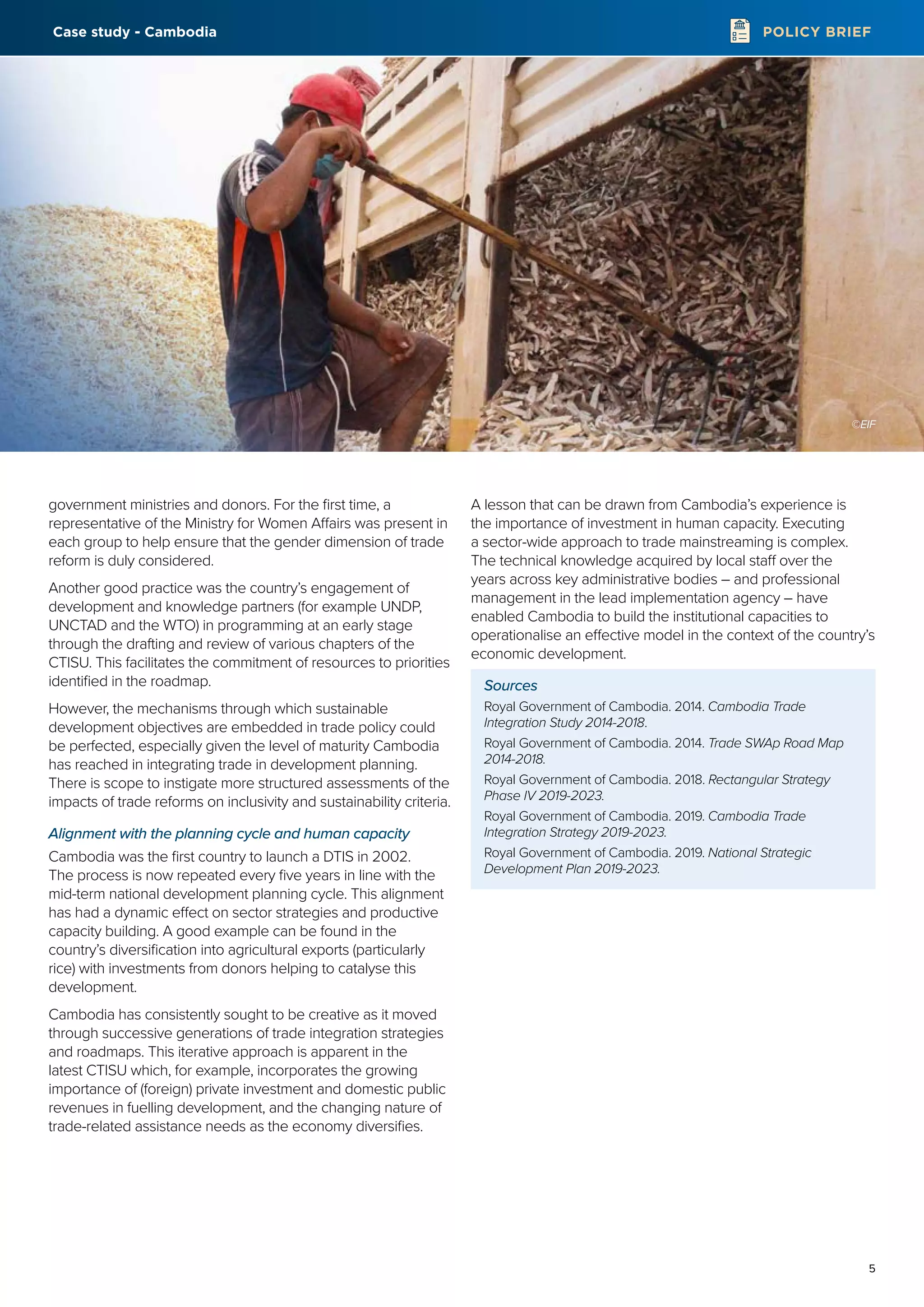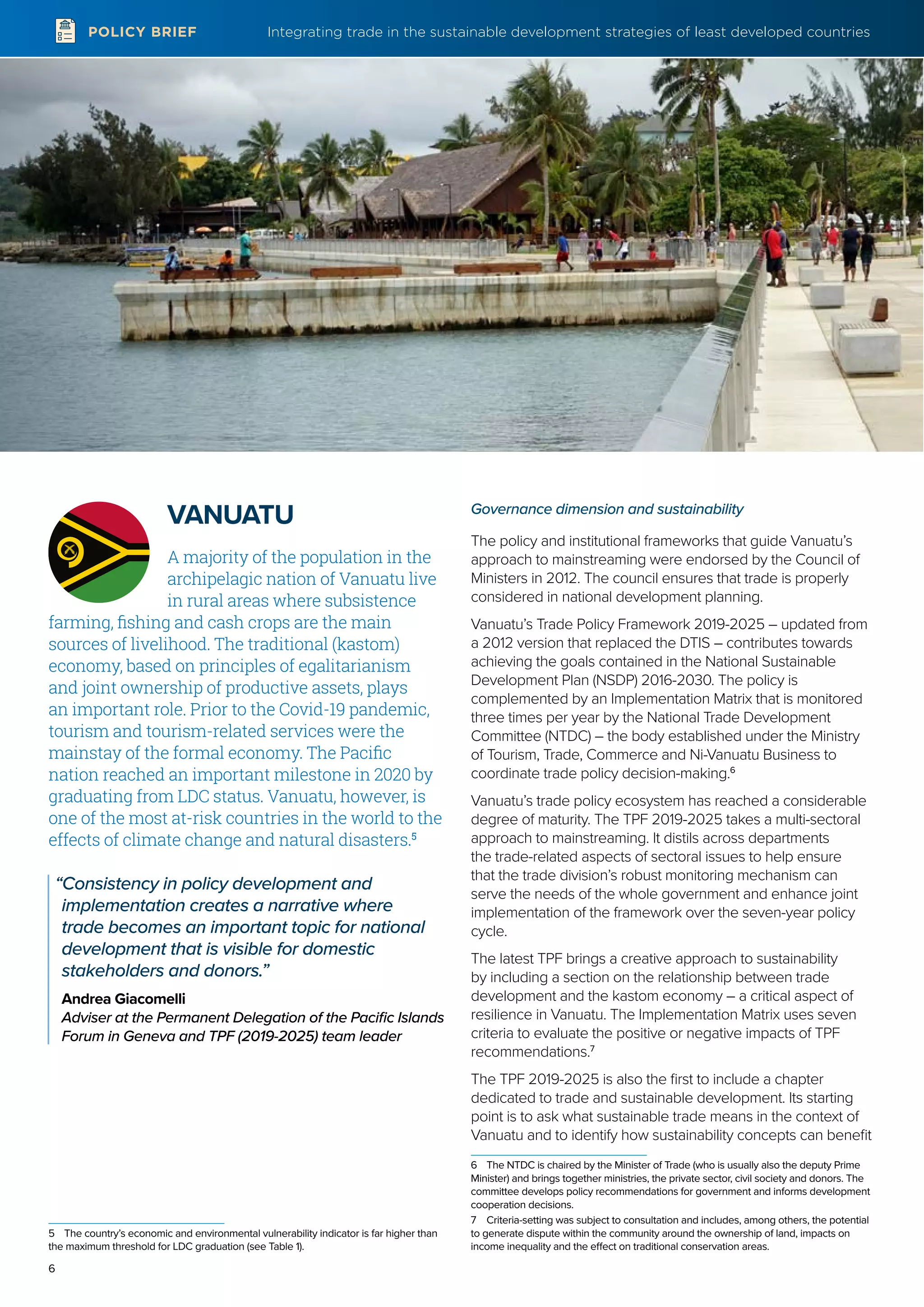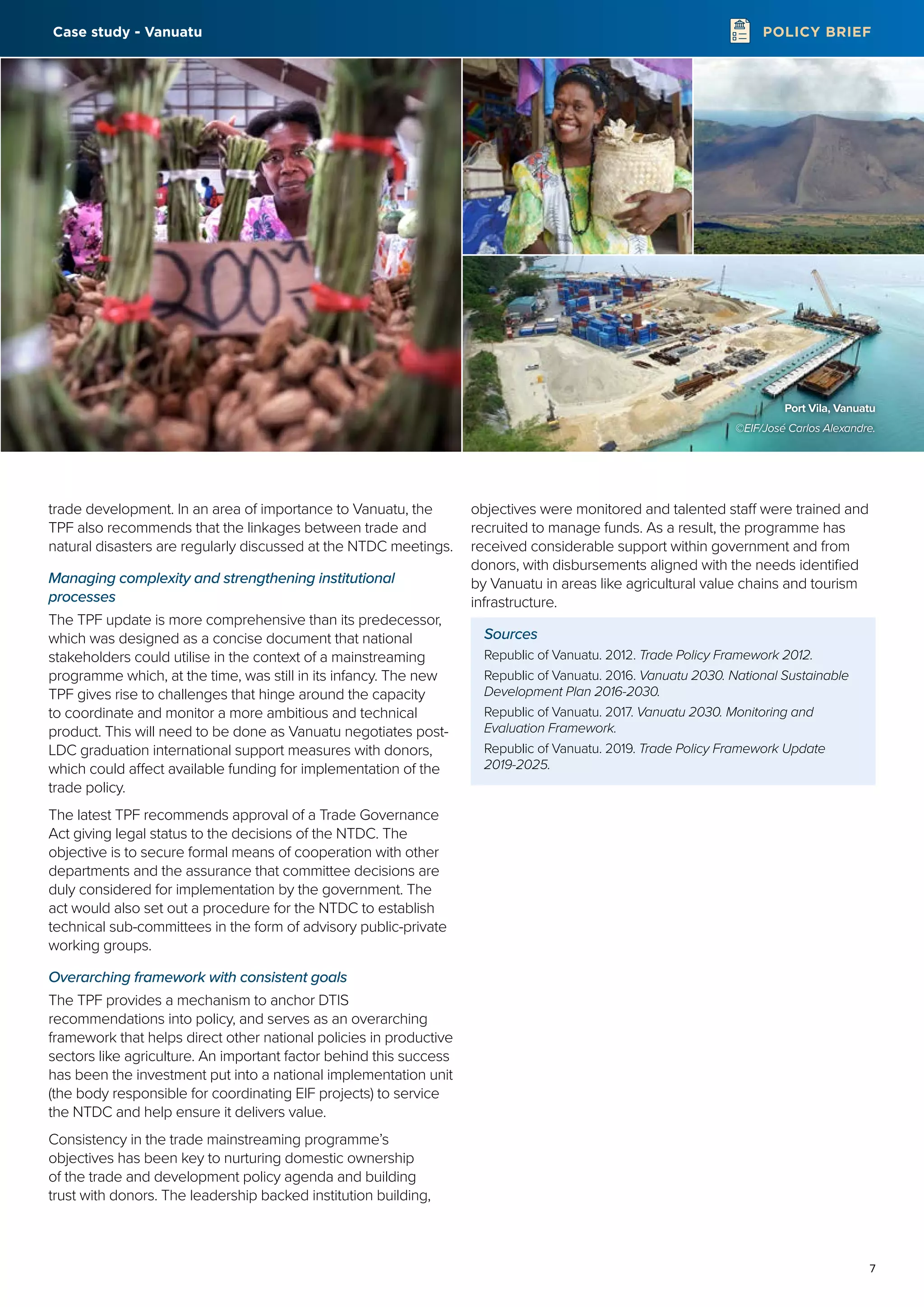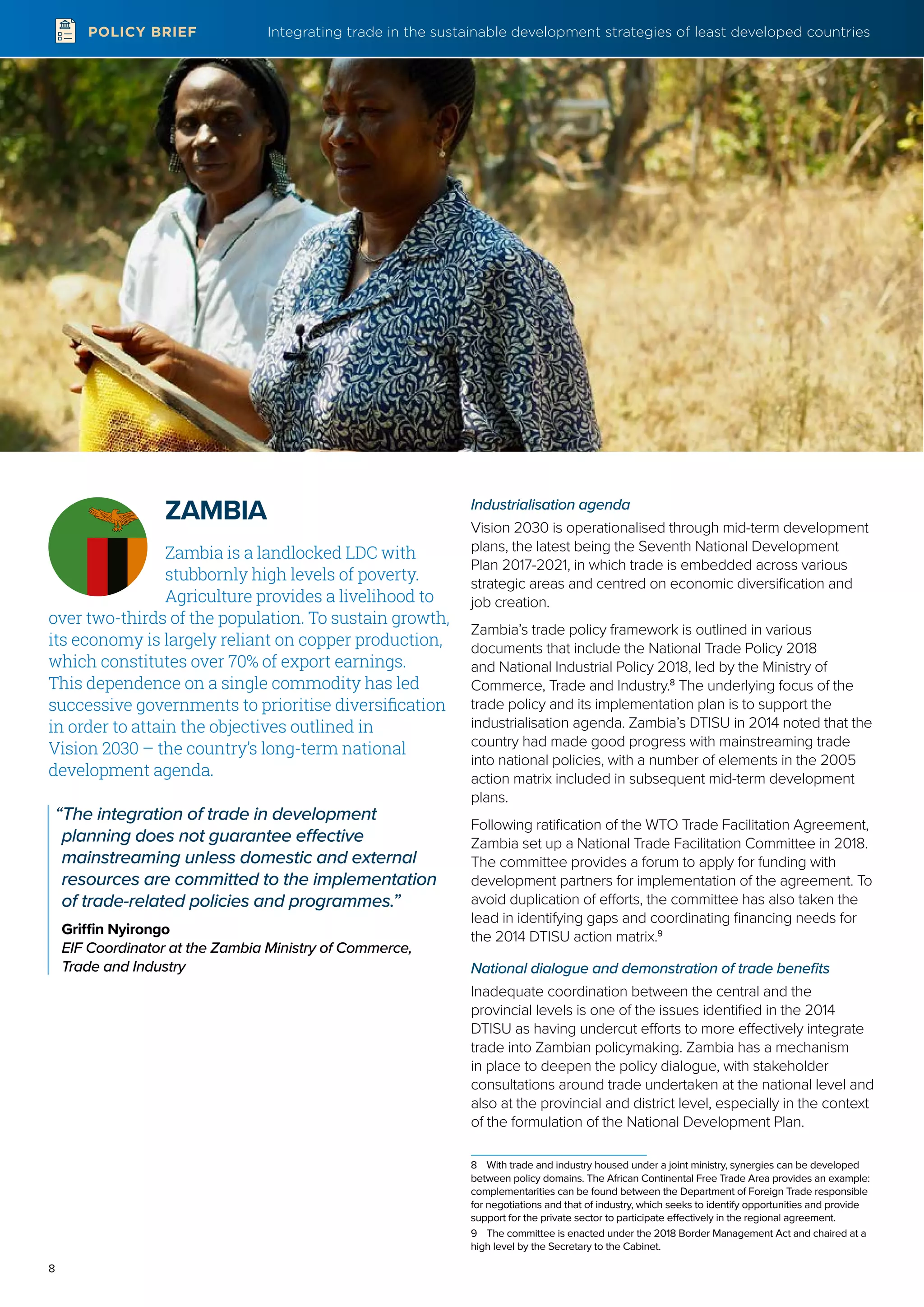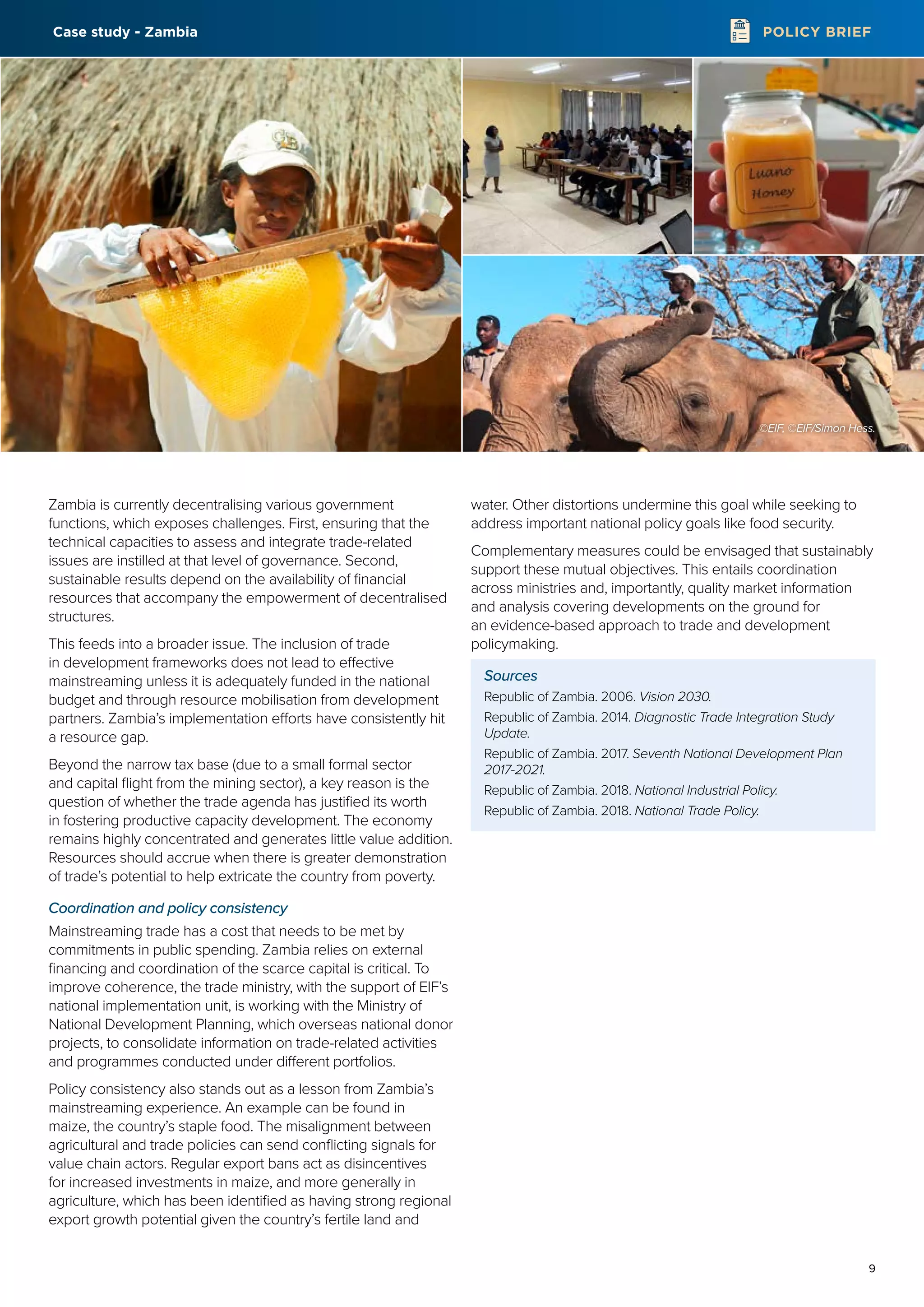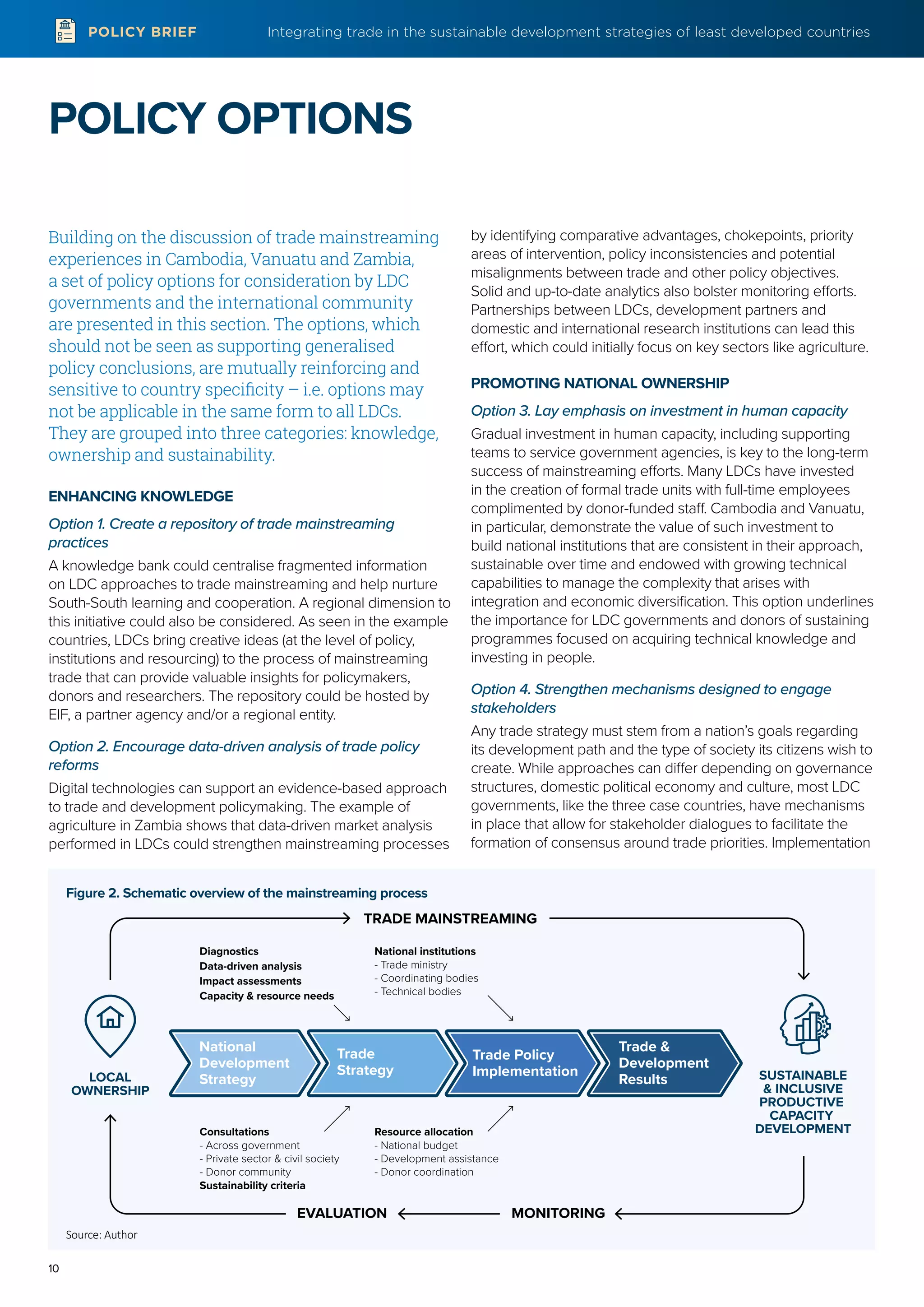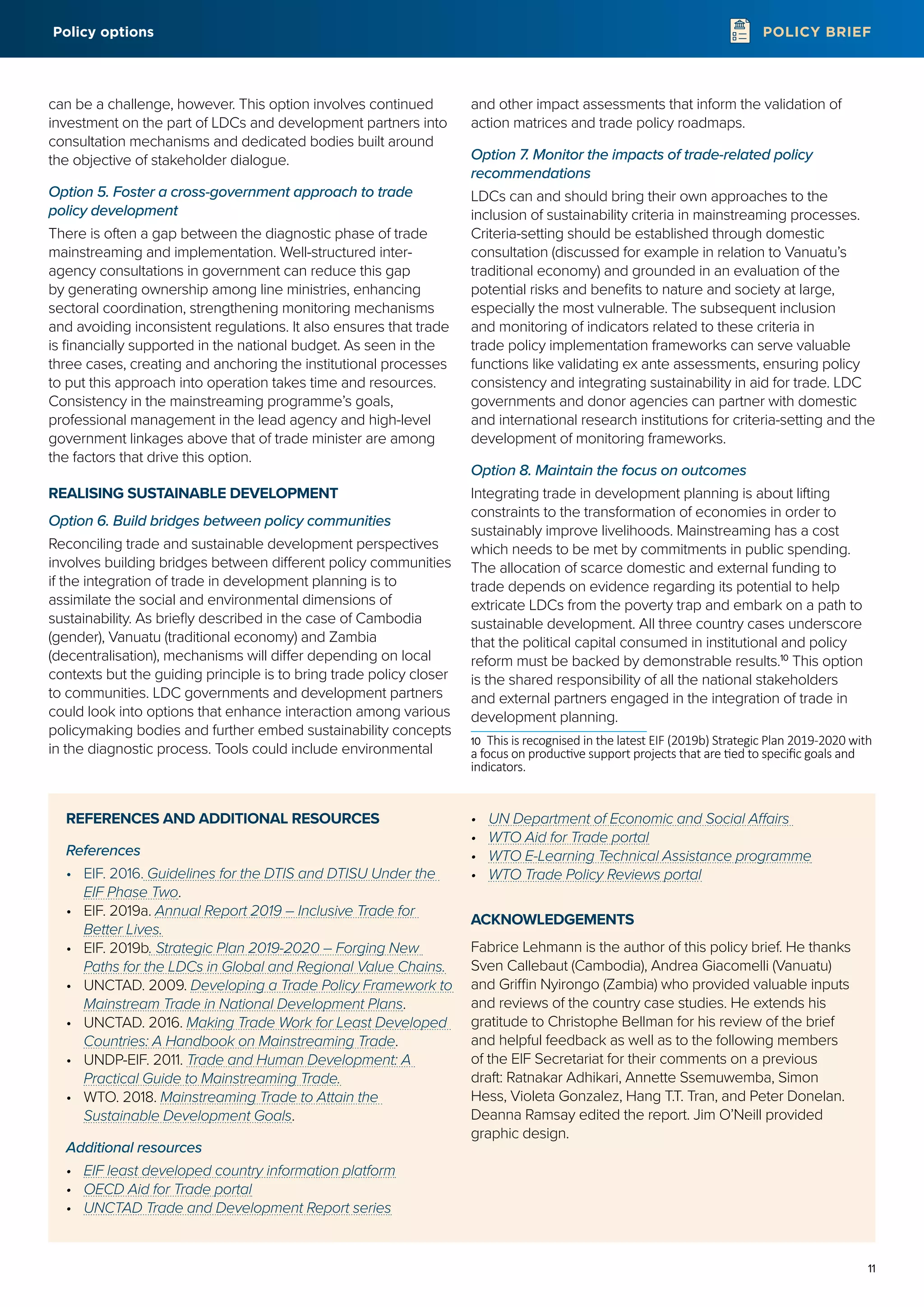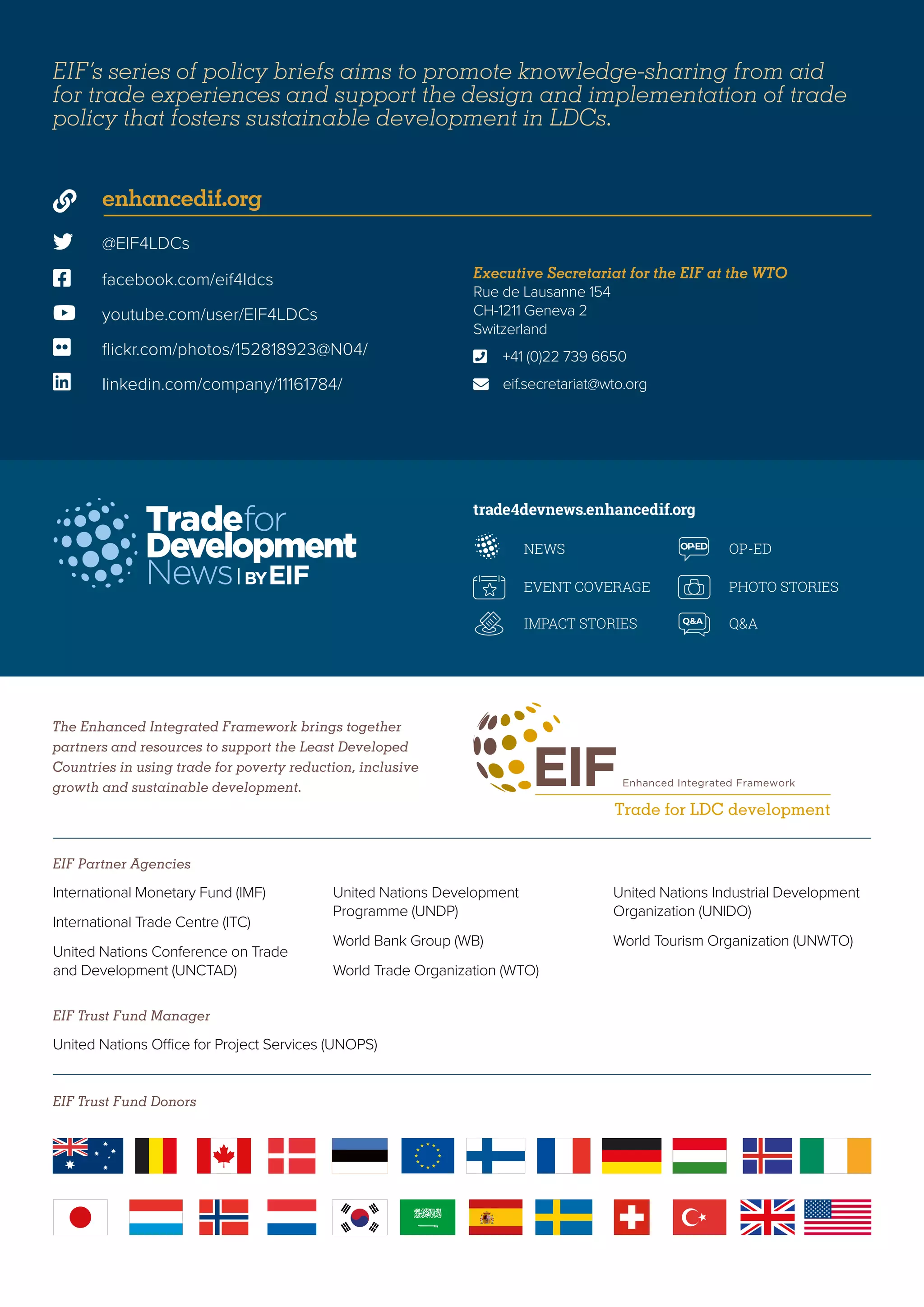National ownership of trade integration processes is important for least developed countries. Three case studies provide lessons on integrating trade into development strategies. Cambodia implemented a creative sector-wide approach through successive trade integration strategies aligned with its planning cycle. This helped diversify exports and build institutional capacity over time. Vanuatu established coordination mechanisms to implement its trade policy framework. Zambia faced challenges ensuring trade reforms benefited all, but stakeholder consultations improved policy coherence. Overall, demonstrating trade's development benefits and investing in human capacity are keys to effective mainstreaming.

